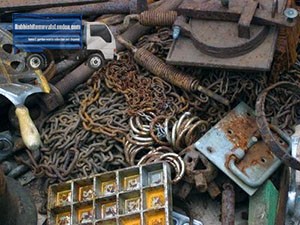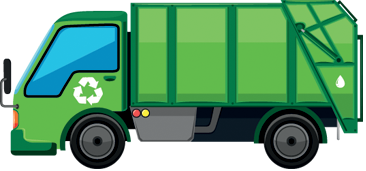Reusing useful rubbish through reprocessing which is what recycling is, has been around for many centuries as a concept and practice. With time, and with the industrial development of the world, it became apparent that metal junk (later known technically as scrap metal) was one of the most useful types of rubbish as it provided the base ingredient for production of new raw materials and metals.
The fact that scrap metal quickly became the most valuable type of rubbish should come as no surprise as back in those days, consumer society and mass production were unknown as concepts. There was no excess consumption of products and raw materials as manufacturing was very limited and focused on machinery. Plus, plastics were quite some time from being discovered as chemistry was a long way from generating such molecules and substances.
 The first types of metal rubbish to be collected and recycled through organised means were household items and machinery scrap from factories. In the US, a few years before the outbreak of WWI, there were people called peddlers who collected all types of metal junk and then sold it on for recycling. In the UK, some manufacturers recycled metal bottle caps as early as the start of the eighteenth century, particularly Schweppes. The first official recycling system with refundable deposits was devised and implemented in Sweden in the late eighteen hundreds.
The first types of metal rubbish to be collected and recycled through organised means were household items and machinery scrap from factories. In the US, a few years before the outbreak of WWI, there were people called peddlers who collected all types of metal junk and then sold it on for recycling. In the UK, some manufacturers recycled metal bottle caps as early as the start of the eighteenth century, particularly Schweppes. The first official recycling system with refundable deposits was devised and implemented in Sweden in the late eighteen hundreds.
During the first and second world wars, particularly WWII, recycling of metal junk was the thing to do. In wartime, when countries are experiencing significant raw material shortages and manufacturing efforts are engaged by the military complex, it was more than necessary to reuse and recycle all sorts of different rubbish, including of course scrap metal. The fact that civilian population, was suffering from shortages of materials and items during wartime was also a key drive for developing effective recycling and reuse practices. Households quickly realised that reusing whatever useful rubbish there is, will make a notable difference in their day to day life, especially in the grip of wartime struggles.
Recycling rubbish and junk, especially scrap metal was also a matter of ideology. In times of war, people were told that victory to large extent, depended on the availability of raw materials and scrap metal which is vitally needed by wartime manufacturing. During WWII the Allies were simultaneously running home front campaigns in which civilian population was strongly urged to donate scrap metal and other useful rubbish as a matter of patriotism.
One of the most popular and recognisable posters from WWII Great Britain actually urged civilian population to collect, store and donate as much rags, bones and paper as possible. These might seem unsuitable in terms of recycling purpose, but such materials were pretty much just as important for the wartime effort as metals were. One of the US posters to urge civilians to donate salvageable metal rubbish actually depicted different types of metal, and how citizens should separate different kinds of scrap metal from one another, one of the posters actually said: ‘Don’t Mix it!’

